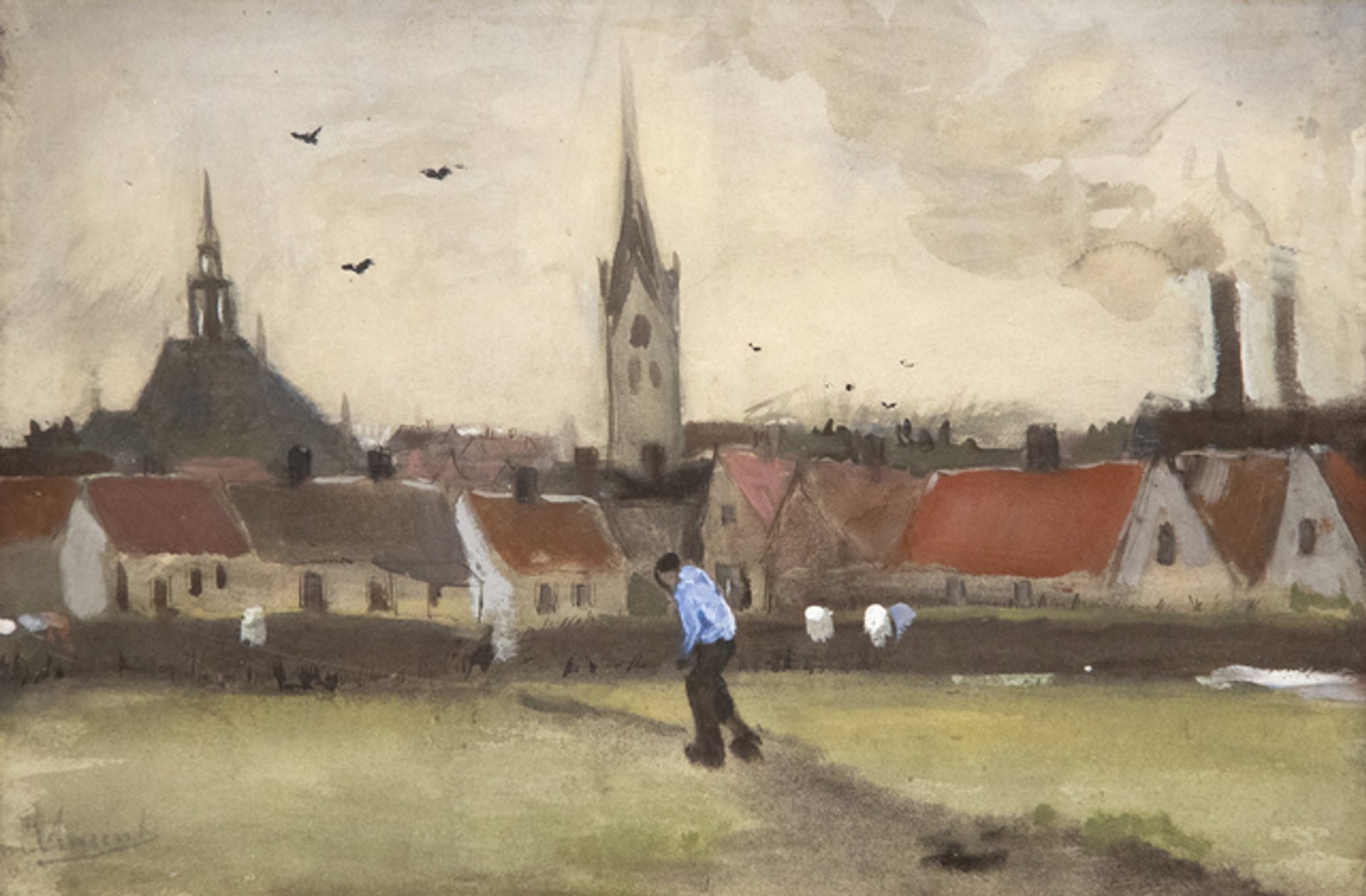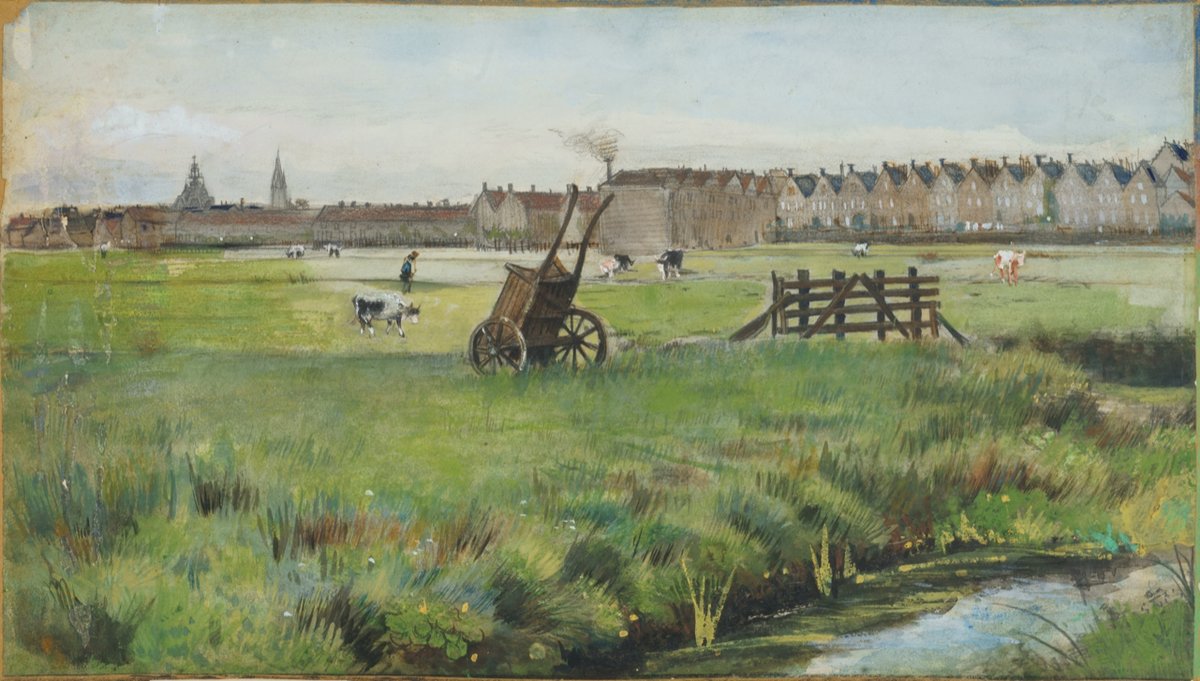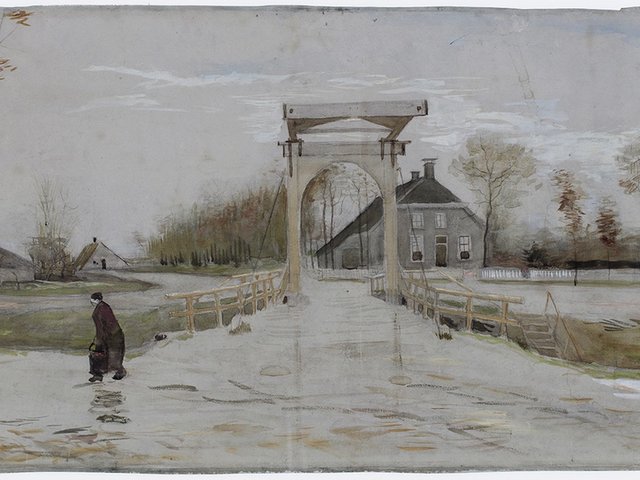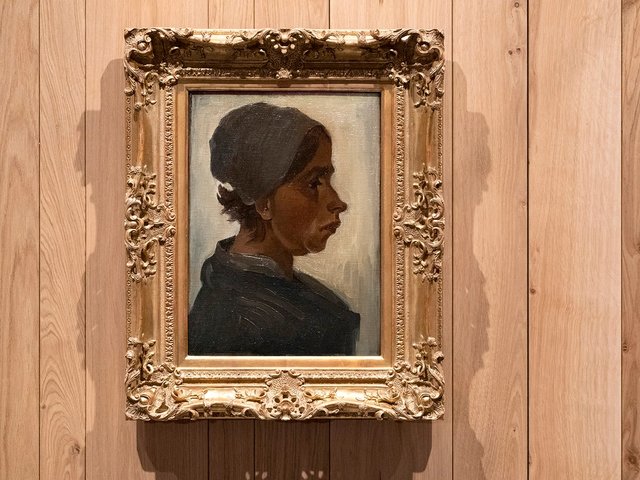A Van Gogh watercolour showing a rural idyll on the outskirts of The Hague in the Netherlands has been bought by a Japanese collector and gone on loan to Saitama’s Museum of Modern Art, just north of Tokyo. It was exhibited once, in 1903, and is known only from a black-and-white photograph. We are now reproducing Meadow, in the Background the New Church and St Jacob’s Church in colour.
The colour image reveals it to be one of Van Gogh’s finest early watercolours, dating from July 1882. Most of the scene is taken up by fields with cows, the archetypal Dutch landscape. On the horizon are rows of houses from the encroaching city, with a smoking factory chimney in the middle.
On the far left the tower of the Nieuwe Kerk (New Church) appears, with that of St Jacob slightly to the right. These two churches are visible closer up in another Van Gogh watercolour, View of The Hague with the New Church.

Van Gogh’s View of The Hague with the New Church (January 1882) Private collection
Vincent painted the watercolour that is now in Japan from near Schenkweg, a road just to the east of the The Hague. The spot would have been a short walk from the garret room which he shared with his lover Sien Hoornik, a former prostitute. From his cramped quarters he had a view over meadows with cows, as depicted in the background of Carpenter’s Yard and Laundry (May 1882).

Van Gogh’s Carpenter’s Yard and Laundry (May 1882) Courtesy of the Kröller-Müller Museum, Otterlo
There is an astonishing story behind the survival of the watercolour now in Japan, which was part of a large batch of Van Gogh’s early works.
When Vincent moved to his parents’ village of Nuenen in 1883 he brought his work from his stay in The Hague, but left it behind in a wooden crate after his departure two years later. Also in the crate were reproductions of works by other artists which he admired.
His mother brought the crate to the Dutch city of Breda when she moved there in 1886. Her new house was small and she therefore stored her son’s possessions with a local carpenter, Adrianus Schrauwen. When woodworm was subsequently found in the crate it was simply left in his attic.
In June 1888 Vincent referred to the crate: “Talking of junk. It might still be worthwhile salvaging anything any good from the junk of mine which, so Theo says, is still somewhere in an attic in Breda.”
Many years later Schrauwen opened the abandoned crate, to find folders with drawings, watercolours and reproductions. What happened after that is not completely clear, but in 1903 he apparently sold some of his own kitchen equipment and Vincent’s possessions for the equivalent of 4 British shillings (or £15 in today’s money).
The buyer was Johannes Couvreur, a second-hand furniture dealer, who initially stored the crate in his cellar. He later recalled that he had “nailed some of the canvases to his pushcart, filled it with drawings, and sallied forth to try to sell them in the bargain market”, where they went for a few pennies each.
Among the buyers was Kees Mouwen, who ran a clothing shop. He later sold Van Gogh’s works to the Rotterdam art dealer Margareta Oldenzeel, who realised their importance.

Oldenzeel’s advertisement for their first 1903 exhibition, Het Vaderland, 11 January 1903
In 1903 Oldenzeel held three exhibitions of Van Gogh’s work, one of which included Meadow, in the Background the New Church and St Jacob’s Church. This watercolour sold for 105 florins (9 British pounds), subsequently passing to three Dutch collectors in the first half of the 20th century: Eduard van Biema, Felix Hirschel and P. Verschure.
The watercolour’s movements since the 1950s remain obscure, but last September it was bought by a Japanese collector, who is believed to be Katsushige Susaki, the director of Marunuma Art Park. Meadow, in the Background the New Church and St Jacob’s Church is now on long-term loan to Saitama’s Museum of Modern Art—representing a strong addition to Van Gogh’s known early watercolours.






